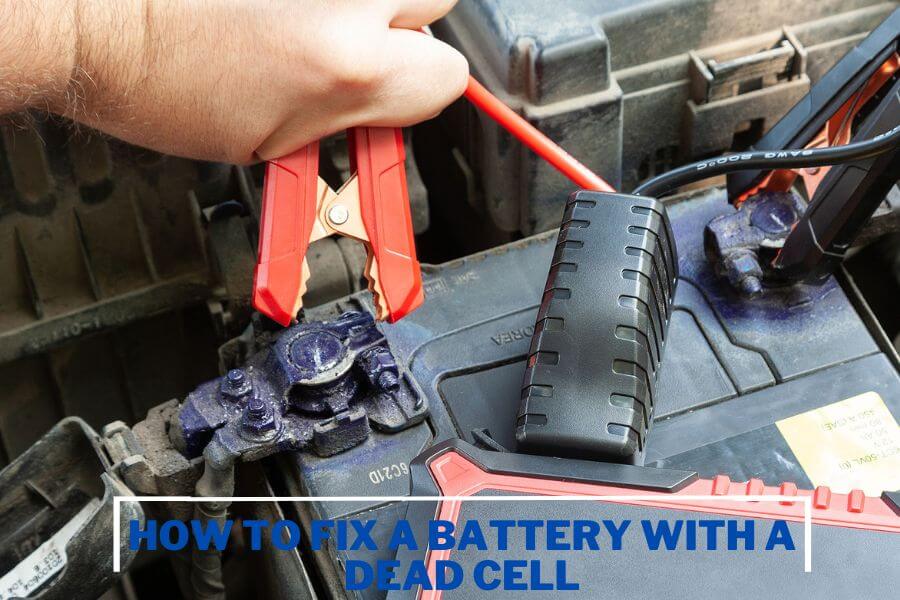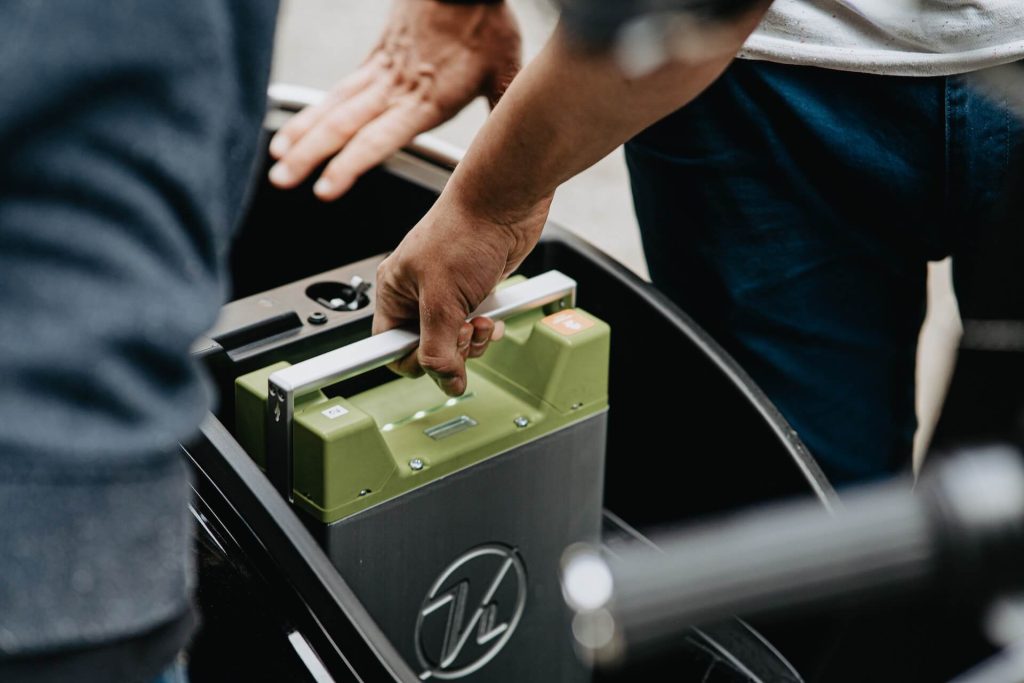Last Updated on June 30, 2023 by Mark S. Taylor
Contents
How to Fix a Battery Dead Cell
Batteries are crucial energy sources for many gadgets, including smartphones and automobiles. However, dead cells can accumulate in batteries over time, which can negatively impact both their performance and lifespan. In this post, we’ll look at a variety of fix a battery dead cell to get it working again.

Understanding Dead Cells in Batteries: In a battery, a dead cell is a section that can no longer store a charge. This may occur as a result of a number of things, including overcharging, sulfation, or physical harm. When a battery has a dead cell, it loses its ability to deliver the necessary power and may not perform at its best.
In order to choose the best course of action, it can be quite important to recognize a battery with a dead cell. Typical indications include:
- battery power being rapidly depleted.
- weak or inconsistent performance.
- a challenge in starting the machine or car.
- battery casing that is swollen or deformed.
- unbalanced battery cell voltage.
Safety Measures to Take Before Repairing a Battery:
Safety must come first before attempting to fix a battery dead cell. Take these safety measures:
- Put on a pair of safety glasses and gloves.
- Work in a room with good ventilation.
- Remove the battery from the machine or car.
- Stay away from open flames and smoking in the area.
Method 1: Reconditioning a battery
To revive the dead cell, a battery needs to be reconditioned by a series of charging and discharging cycles. Take these actions:
Step 1: Get the Battery Ready
Make sure the battery is corrosion-free and spotless. Check the battery for physical deterioration. Replace the battery if there is significant damage.
Step 2: Charge the battery
Connect the battery to the right charger, then let it finish charging. Observe the charging time recommendations provided by the manufacturer.
Step 3: Discharge the battery
Use the battery to power a low-power gadget after disconnecting it from the charger. Allow the battery to totally drain.
Step 1: Repeat the process
To help the dead cell restore its capacity, recur in the charging and discharging cycles. After each cycle, keep an eye on the battery’s performance.
Method 2: Replacing the Dead Cell Using
It could be essential to replace the dead cell if battery restoration is unsuccessful. Take these actions:
Step 1: Finding the Dead Cell
Measure the voltage across each battery cell with a multimeter. Find the cell with the voltage reading that is either zero or much lower. This is a sign of a dead cell.
Step 2: Remove the dead cell
To get to the damaged cell, carefully disassemble the battery. Utilize the correct safety precautions and equipment to prevent accidents. The dead cell should be removed from its place.
Step 3: Insert the New Cell
Purchase a replacement cell with the same features. Make sure the replacement cell is properly aligned and connected before inserting it into the battery.
Step 4: Reassembling the Battery
Reassemble the battery with caution, making sure that each part is in its proper place. Verify the connections once more and fasten the battery case.
Method 3: Getting Expert Assistance:
It is advised to seek expert help if you are unsure about fixing the battery yourself or if the battery is still covered by warranty. Professional technicians have the knowledge and specialized equipment needed to accurately diagnose and repair batteries with dead cells.
Prevention Techniques for Battery Dead Cells:
Consider these precautions to reduce the likelihood of dead cells in batteries:
Do not overcharge your batteries.
Utilize chargers created exclusively for the battery type.
Batteries should be kept in a dry, cool place.
Battery terminals should be regularly cleaned, along with any corrosion.
Before dead cells start to form in old batteries, replace them.
It can be difficult to fix a battery dead cell, but with the appropriate method, it is possible to get it back to working order. A battery with a dead cell can be revived through battery reconditioning and cell replacement. However, it’s imperative to put safety first and take into account getting professional assistance when necessary. You can increase the lifespan of your batteries and prevent dead cells by taking preventive actions.

A Dead or Damaged Cell Is What?
A battery component that can no longer maintain a charge or perform properly is referred to as a dead or damaged cell. Batteries, particularly automotive batteries, are made up of several cells, each of which is in charge of producing and storing electrical energy. The performance and lifespan of the battery might be greatly impacted when a cell goes bad or is destroyed.
Numerous factors, including overcharging, sulfation (a process in which sulfur builds up on the battery plates), physical harm, and aging, can result in dead cells in batteries. These elements may cause the cell’s internal parts to break down, which would make it less effective at retaining a charge.
Read More: How to Reset a Map Sensor: The Ultimate Guide
How Do I Fix a Dead Car Battery?
There are a few actions you can do to solve the problem if your car battery dies:
Jump-starting your automobile is an option if you have access to jumper cables and another vehicle with a working battery. Start the operating car, connect the cables as per the instructions, and let it run for a few minutes. Try starting your automobile after that.
Use a portable jump starter: These convenient tools let you jump-start your car without the aid of another vehicle. These portable power units give your car the boost it needs to start up again.
Call for roadside help: This is a dependable choice if you are unable to jump-start your automobile or would prefer professional assistance. They will send a specialist to your area to assess the situation and offer the appropriate remedy, which may entail towing, battery replacement, or jump-starting.
Replace the battery: If the battery in your automobile is weak, old, or keeps failing, it could be time to change it. 3-5 years is the normal lifespan of a car battery, depending on usage and upkeep. To make sure you select the right battery for your car model, consult the manual for your vehicle or ask a specialist for guidance.
What Indicates A Dead Cell In A Car Battery?
Fix a battery dead cell can manifest itself in a number of ways. These consist of:
Starting the automobile is difficult: If you turn the ignition key and the engine cranks slowly or struggles to start, it may indicate that a battery cell is dead.
Dimming headlights: A dead cell might lower the battery’s total voltage, which can dim the headlights or any other electrical devices that depend on the battery for electricity.
Rapid battery discharge: If your battery continually discharges quickly despite a full charge, a dead cell may be at blame.
Electrical performance irregularities: You can notice electrical performance irregularities, such as flickering lights or unpredictable operation of electronic equipment within the automobile.
Swollen battery case: Occasionally, a dead cell might result in the swelling or deformation of the battery’s afflicted region. This is an obvious sign that there is a problem with the battery.
It is advised to have your battery checked and tested by a qualified technician if you notice any of these symptoms to determine whether a dead cell is present.
Why Does A Car Battery Have A Dead Cell?
A dead cell in a car battery can occur for a number of reasons, including the following:
Continuous overcharging of the battery can produce excessive heat and cause individual cells to be damaged or fail.
Sulfation: Sulfur builds up on the battery plates over time, which causes sulfation. This may prevent the chemical processes required for normal cell function.
Physical damage: The battery cells may sustain physical damage from outside reasons including accidents or inappropriate handling, which will result in dead cells.
Aging: As a battery becomes older, its internal parts deteriorate, which increases the possibility of dead cells.
Dead cells can occasionally result from manufacturing flaws or irregularities in the battery production process.
Follow recommended battery maintenance procedures, steer clear of overcharging, and be sure to promptly replace a car battery when it approaches the end of its useful life to reduce the chance of dead cells.
Can I replace a dead cell in a battery on my own?
Yes, if you use the necessary techniques described in this article, you can try to fix a battery that has a dead cell. However, if you are unsure, use caution and think about getting guidance from a specialist.
How long does it take to recondition a battery?
Depending on the battery type and the seriousness of the dead cell, the length of battery reconditioning can change. It can take a few days or weeks to complete numerous charging and discharge cycles.
What should I do if I can’t tell which battery cell is dead?
It is important to speak with a trained specialist if you are unable to locate the dead cell using a voltmeter or lack the necessary knowledge.
Can I completely avoid dead cells in batteries?
Even though it might not be feasible to totally prevent dead cells in batteries, taking precautions like correct charging, storage, and maintenance can greatly lower the likelihood that they will occur.
Is it safe to dispose of dead cell batteries?
According to local laws, dead batteries should be disposed of responsibly. For suitable disposal techniques to reduce the impact on the environment, speak with your local waste management authority.
